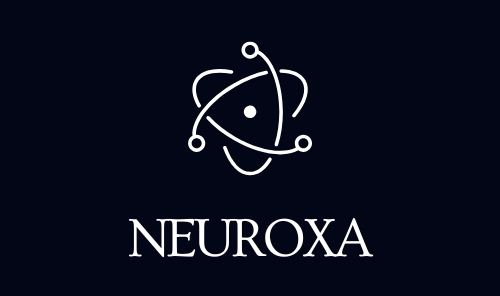Introduction: Reclaiming the Teacher’s Week
The biggest driver of teacher burnout is the overwhelming workload outside of direct instruction. Educators spend an average of 6.7 hours per week on lesson planning and an additional 5.2 hours on grading, according to recent data. When combined with hours spent searching for instructional materials, the administrative burden quickly overshadows the core mission of teaching.
- Introduction: Reclaiming the Teacher’s Week
- Section 1: The AI Advantage: Time Saved and Differentiation Scaled
- Section 2: The 3-Step AI Planning Prompt (The Core Technique)
- Section 3: Customization Blueprint: Differentiating for Diverse Learners
- Section 4: Low-Cost AI Planning Tools (2025 Toolkit)
- Conclusion: The New Role of the Educator
This administrative load is the primary reason why 55% of teachers report AI has given them more time for direct, one-on-one interaction with their students. AI automates the mechanical process of generating instructional materials, allowing the teacher to focus on the human tasks—mentoring, adapting, and guiding.
The most transformative application of GenAI for educators is creating differentiated lesson plans. Differentiation—adapting content and pace to meet individual student needs (IEPs, advanced learners, ELLs)—is universally recognized as best practice, yet it is nearly impossible to implement consistently without automation.
By utilizing strategic prompt engineering with free AI tools, you can generate a complete, standards-aligned, and differentiated lesson plan in under 10 minutes.
Section 1: The AI Advantage: Time Saved and Differentiation Scaled
AI’s value in the classroom is often divided into two high-ROI categories: administrative efficiency and pedagogical impact.
Quantifying the AI Impact (2025 Data)
| Metric | Traditional Manual Process | AI-Enhanced Process | Benefit to Educator |
| Time on Research/Planning | 6.7 hours per week | 44% time saved (via AI automation) | Focus time shifts from research to student interaction. |
| Learning Outcomes | Fixed-pace, standardized instruction. | Up to 30% improvement with personalized learning paths. | Students achieve higher test scores and master concepts faster. |
| Teacher Sentiment | High workload, administrative burden. | 69% of teachers report AI improved their teaching methods. | Increased job satisfaction and reduced burnout. |
| Assessment Design | Manual rubric and question creation. | AI generates assessments and rubrics 10x faster than traditional methods. | Immediate feedback loop for student learning. |
The most significant shift is scalability. AI allows one teacher to create not just one lesson plan, but three or four versions of that plan—for advanced learners, general learners, and students needing intervention—in the same time it took to create one generic plan manually.
Section 2: The 3-Step AI Planning Prompt (The Core Technique)
You don’t need expensive software to start. Core LLMs like ChatGPT or Gemini (or specialized tools like MagicSchool.ai which uses similar underlying tech) can generate sophisticated plans using a structured prompt.
The Ultimate Lesson Plan Prompt Blueprint
This three-part structure ensures the AI understands the Role, the Context, and the Output Format.
Step 1: Define the Role and Goal (The Context)
Tell the AI who it is and what it must achieve.
- Prompt Snippet: “Act as an expert 8th Grade Science Curriculum Designer. Your task is to design a 50-minute lesson plan on Ecosystems and Biodiversity. The lesson must align with [State/National Standard Code, e.g., NGSS MS-LS2-1] and focus on inquiry-based learning.”
Step 2: Input Content and Constraints (The Differentiator)
Provide the specific material and constraints (time, resources, student needs). This is where the magic of differentiation happens.
- Prompt Snippet: “The lesson should include a 5-minute warm-up, a 30-minute core activity, and a 15-minute exit ticket. The core activity must involve collaborative group work. The key concepts to cover are biotic factors, abiotic factors, and carrying capacity. Differentiate the content by providing three versions of the reading material—one at a 6th-grade level, one at an 8th-grade level, and one with built-in vocabulary scaffolds for ELL students.”
Step 3: Specify the Output Format (The Actionable Plan)
Demand a structure that you can copy/paste directly into your planner.
- Prompt Snippet: “Present the final output as a single Markdown table with columns for Time, Activity, Materials, and Differentiation Notes. The table must be editable in Google Docs. Conclude the plan with a 3-question formative assessment (exit ticket).”
Estimated Time to Generate: 60 seconds.
Section 3: Customization Blueprint: Differentiating for Diverse Learners
The most powerful time savings come from the AI’s ability to instantly adapt content for specific student populations, a task that previously took hours of manual searching and rewriting.
AI Adaptations for Diverse Needs
| Student Population | Manual Adaptation (Time-Intensive) | AI Generation Prompt Tactic |
| Students with IEPs | Manually breaking down learning objectives and complex texts. | “Adapt the core reading text to a 4th-grade reading level and generate 5 multiple-choice questions based on the revised text to align with the student’s documented accommodation for simplified language and format.” |
| English Language Learners (ELLs) | Creating custom vocabulary lists and providing parallel text in native languages. | “Generate a Key Vocabulary List for the lesson content. Provide the definitions in Spanish and Vietnamese. Generate a text scaffold that provides sentence starters for the group discussion.” |
| Advanced Learners | Finding extension activities or creating open-ended project work. | “Generate an ‘Expert Group’ challenge that requires students to design an experimental model for measuring the impact of a non-native invasive species on the local ecosystem. Provide a resource list.” |
| Visual Learners | Creating infographics or diagrams. | “Provide a detailed visual description of the lesson’s main concept so I can use a text-to-image AI tool (like Canva’s Magic Media) to generate a helpful infographic.” |
Section 4: Low-Cost AI Planning Tools (2025 Toolkit)
While core LLMs are essential, specialized EdTech AI tools built specifically for teachers streamline the process even further, often with standards alignment built-in.
| Tool Name | Key Feature | Price Point | Best for: |
| MagicSchool.ai | 60+ tools for teachers: standards alignment, question generation, differentiation. | Free Tier available | All-in-one efficiency and standards compliance. |
| Diffit | Instantly adapts any text (URL, PDF, Article) to a specific reading level (K-12). | Free Tier available | Differentiation and creating accessible reading materials. |
| Eduaide.AI | Lesson Seed, Unit Plan generation, and built-in educational games/graphic organizers. | Free Tier available | Comprehensive unit and game creation. |
| Curipod | Turns a single idea into a full, interactive slide deck with polls and discussion prompts. | Free Tier available | Creating engaging, ready-to-teach presentation materials. |
Conclusion: The New Role of the Educator
The Lesson Plan Revolution is not about surrendering curriculum design to a machine; it’s about shifting the teacher’s energy from content generation to instructional design. AI handles the heavy lifting of drafting, formatting, and differentiating, ensuring basic compliance and accessibility.
This transition allows the educator to assume the critical role of curator, editor, and mentor. You take the AI-generated plan, review it for tone and nuance, inject your passion and local context, and then dedicate the hours you saved back into the classroom—where the human connection drives the highest educational ROI.
By spending 10 minutes with AI instead of 10 hours planning, you move from surviving the week to truly thriving as an educator.
Source List
- EdSurge:We Know How Much Planning Time Teachers Get on Average. Is It Enough? (March 2024)
- Engageli:20 Statistics on AI in Education to Guide Your Learning Strategy in 2025 (November 2025)
- ExecuteAI Software:The Global AI Shift in Education (November 2025)
- University of San Diego Professional & Continuing Ed:Top AI Tools for Teachers in 2025 (August 2025)
- Indiana Wesleyan University:How AI is Revolutionizing Lesson Plan Design for Teachers (September 2025)









